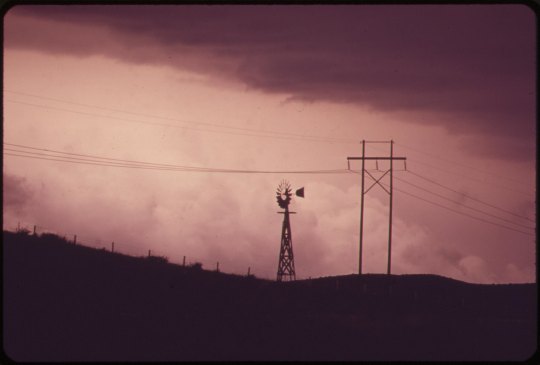#NEW MEXICO
Explore tagged Tumblr posts
Text

Billy the Kid Scenic Byway - New Mexico
1K notes
·
View notes
Text
"The state, which has long ranked worst in the US for child wellbeing, became the first and only in the country to offer free childcare to a majority of families
There was a moment, just before the pandemic, when Lisset Sanchez thought she might have to drop out of college because the cost of keeping her three children in daycare was just too much.
Even with support from the state, she and her husband were paying $800 a month – about half of what Sanchez and her husband paid for their mortgage in Las Cruces, New Mexico.
But during the pandemic, that cost went down to $0. And Sanchez was not only able to finish college, but enroll in nursing school. With a scholarship that covered her tuition and free childcare, Sanchez could afford to commute to school, buy groceries for her growing family – even after she had two more children – and pay down the family’s mortgage and car loan.
“We are a one-income household,” said Sanchez, whose husband works while she is in school. Having free childcare “did help tremendously”.
...Three years ago, New Mexico became the first state in the nation to offer free childcare to a majority of families. The United States has no federal, universal childcare – and ranks 40th on a Unicef ranking of 41 high-income countries’ childcare policies, while maintaining some of the highest childcare costs in the world. Expanding on pandemic-era assistance, New Mexico made childcare free for families earning up to 400% of the federal poverty level, or about $124,000 for a family of four. That meant about half of New Mexican children now qualified.
In one of the poorest states in the nation, where the median household income is half that and childcare costs for two children could take up 80% of a family’s income, the impact was powerful. The state, which had long ranked worst in the nation for child wellbeing, saw its poverty rate begin to fall.
As the state simultaneously raised wages for childcare workers, and became the first to base its subsidy reimbursement rates on the actual cost of providing such care, early childhood educators were also raised out of poverty. In 2020, 27.4% of childcare providers – often women of color – were living in poverty. By 2024, that number had fallen to 16%.
During the state’s recent legislative session, lawmakers approved a “historic” increase in funding for education, including early childhood education, that might improve those numbers even further...
When now-governor Michelle Lujan Grisham announced her candidacy in late 2016, she emphasized her desire to address the state’s low child wellbeing rating. And when she took office in January 2018, she described her aim to have a “moonshot for education”: major investments in education across the state, from early childhood through college.
That led to her opening the state’s early childhood education and care department in 2019 – and tapping Groginksy, who had overseen efforts to improve early childhood policies in Washington DC, to run it. Then, in 2020, Lujan Grisham threw her support behind a bill in the state legislature that would establish an Early Childhood Trust Fund: by investing $300m – plus budget surpluses each year, largely from oil and gas revenue – the state hoped to distribute a percentage to fund early childhood education each year.
But then, just weeks after the trust fund was established, the World Health Organization declared Covid-19 a pandemic.
“Covid created a really enormous moment for childcare,” said Heinz. “We had somewhat of a national reckoning about the fact that we don’t have a workforce if we don’t have childcare.”
As federal funding flooded into New Mexico, the state directed millions of dollars toward childcare, including by boosting pay for entry-level childcare providers to $15 an hour, expanding eligibility for free childcare to families making 400% of the poverty level, and becoming the first state in the nation to set childcare subsidy rates at the true cost of delivering care.
As pandemic-era relief funding dried up in 2022, the governor and Democratic lawmakers proposed another way to generate funds for childcare – directing a portion of the state’s Land Grant Permanent Fund to early childhood education and care. Like the Early Childhood Trust Fund, the permanent fund – which was established when New Mexico became a state – was funded by taxes on fossil fuel revenues. That November, 70% of New Mexican voters approved a constitutional amendment directing 1.25% of the fund to early childhood programs.
By then, the Early Childhood Trust Fund had grown exponentially – due to the boom in oil and gas prices. Beginning with $300m in 2020, the fund had swollen to over $9bn by the end of 2024...
New Mexico has long had one of the highest “official poverty rates” in the nation.
But using a metric that accounts for social safety net programs – like universal childcare – that’s slowly shifting. According to “supplemental poverty” data, 17.1% of New Mexicans fell below the federal “supplemental” poverty line from 2013 to 2015 (a metric that takes into account cost of living and social supports) – making it the fifth poorest state in the nation by that measure. But today, that number has fallen to 10.9%, one of the biggest changes in the country, amounting to 120,000 fewer New Mexicans living in poverty.
New Mexico’s child wellbeing ranking – which is based heavily on “official poverty” rankings – probably won’t budge, says Heinz because “the amount of money coming into households, that they have to run their budget, remains very low.
“However, the thing New Mexico has done that’s fairly tremendous, I think, is around families not having to have as much money going out,” she said.
During the recent legislative session, lawmakers deepened their investments in early childhood education even further, approving a 21.6% increase of $170m for education programs – including early childhood education. However, other legislation that advocates had hoped might pass stalled in the legislature, including a bill to require businesses to offer paid family medical leave...
In her budget recommendations, Lujan Grisham asked the state to up its commitment to early childhood policies, by raising the wage floor for childcare workers to $18 an hour and establishing a career lattice for them. Because of that, Gonzalez has been able to start working on her associate’s in childhood education at Central New Mexico Community College where her tuition is waived. The governor also backed a house bill that will increase the amount of money distributed annually from the Early Childhood Trust Fund – since its dramatic growth due to oil and gas revenues.
Although funding childcare through the Land Grant Permanent Fund is unique to New Mexico – and a handful of other states with permanent funds, like Alaska, Texas and North Dakota – Heinz says the Early Childhood Trust fund “holds interesting lessons for other states” about investing a percentage of revenues into early childhood programs.
In New Mexico, those revenues come largely from oil and gas, but New Mexico Voices for Children has put forth recommendations about how the state can continue funding childcare while transitioning away from fossil fuels, largely by raising taxes on the state’s wealthiest earners. Although other states have not yet followed in New Mexico’s footsteps, a growing number are making strides to offer free pre-K to a majority of their residents.
Heinz cautions that change won’t occur overnight. “What New Mexico is trying to do here is play a very long game. And so I am not without worry that people might give it five years, and it’s been almost five years now, and then say, where are the results? Why is everything not better?” she said. “This is generational change” that New Mexico is only just beginning to witness as the first children who were recipients of universal childcare start school."
-via The Guardian, April 11, 2025
#childcare#children#preschool#pre k#daycare#new mexico#united states#north america#lujan grisham#poverty#child poverty#education#early childhood education#good news#hope
3K notes
·
View notes
Text


Late evening glow
#new mexico#landscape photography#nature photography#film photography#35mm#filmisnotdead#mountains#high desert#sunset#naturecore#photographers on tumblr#original photographers#lensblr#diary
2K notes
·
View notes
Text
by Tag Christof, americaisdead.tumblr.com
Daily original photographs and creations selected by the imiging team!

grants, n. mex. april 2025
© tag christof
82 notes
·
View notes
Text

Happy Easter daisies
21 notes
·
View notes
Text


New Mexico's Melanie Stansbury
13K notes
·
View notes
Text

Church and cross, Chilili, New Mexico, Harold Allen, 1955
#photography#harold allen#1950s#churches#black and white#new mexico#crosses#vintage#architechture#cross
296 notes
·
View notes
Text

I love this trend and I’ve been seeing some regional Mikus, so take a New Mexican birthday girl in honor of Zozobra and hatch chile season. 🌵🫔⛰️
#Particularly proud of the boots with snippets of the disappearance of Hatsune Miku sheet music#miku worldwide#vocaloid#hatsune miku#vocaloid miku#miku fanart#miku#new mexico#art i made#image description in alt
4K notes
·
View notes
Text






the desert has my heart. always. ca. 2020.
#landscape#aesthetic#nature#sunset#new mexico#flowers#purple#california#arizona#nevada#ruralcore#rural life#rural#rural america#desert#desertcore#hiking#camping
75 notes
·
View notes
Text

Wim Wenders, Black Square, New Mexico, 2002
152 notes
·
View notes
Text

Elijah Rael
#new mexico#landscape photography#nature photography#high desert#mountains#clouds#sunset#sky#ethereal#naturecore#lensblr#curators on tumblr
1K notes
·
View notes
Text

ghost ranch, abiquiu new mexico
#photographer#photography#new mexico#cowboy#cowboycore#ranch#road trip#southwestern#vintage#yeehawgust#travel#artist#artists on tumblr#yeehaw
4K notes
·
View notes
Text



Montana, Wyoming, and New Mexico, 1973
Photographs by Boyd Norton
3K notes
·
View notes
Text

#beyond the adobe#western living#western style#southwestern#ranch life#cowboy life#boho western#santa fe#new mexico#land of enchantment
945 notes
·
View notes
Text
"Conservationists in New Mexico are celebrating the state’s expanding population of wild river otters, as their numbers have tripled in the last 14 years.
Though native to the state, the beasts were extirpated completely during the 1900s, likely due to a mixture of overtrapping and habitat destruction.
However, groups can now be seen swimming about in waterways located in communities like Taos, Angel Fire, Pilar, and Corrales along the Rio Grande, and there’s every chance this expansion will continue.
“In 2008 to 2010, the department released 33 otters, and those reintroduction efforts took otters from Washington and brought them into the upper Rio Grande,” said Carnivore and Small Mammal Program Manager for the New Mexico Dept. of Game and Fish Nick Forman to KRQE News 13.

Ecologists say they help riverine ecosystems by keeping prey species in check and improving water quality.
“They provide that ecosystem service of being a top predator,” Forman added. “It’s good to have this species back in the role it’s always played in our rivers and lakes.”
The department now is asking members of the public to send them any photos or videos of otters in the wild they take, hoping to use citizen science to better map their distribution around the state whilst conservationists mull over whether to continue with future release efforts."
-via Good News Network, December 4, 2024
--
Extra details from KRQE:
"A 2018 study showed the population grew from 33 to 100 river otters statewide. More recently, the department released nine otters from Louisiana which they hope will bring genetic diversity to the current population and help the species make a comeback. “They provide that ecosystem service of being a top predator. To have them back on the landscape after being gone for so long, it’s really bringing back that native part of the landscape,” said Forman."
-via KRQE, November 13, 2024
#united states#new mexico#river otter#otter#otters#wildlife#wild animals#conservation#biodiversity#ecology#endangered species#good news#hope
1K notes
·
View notes